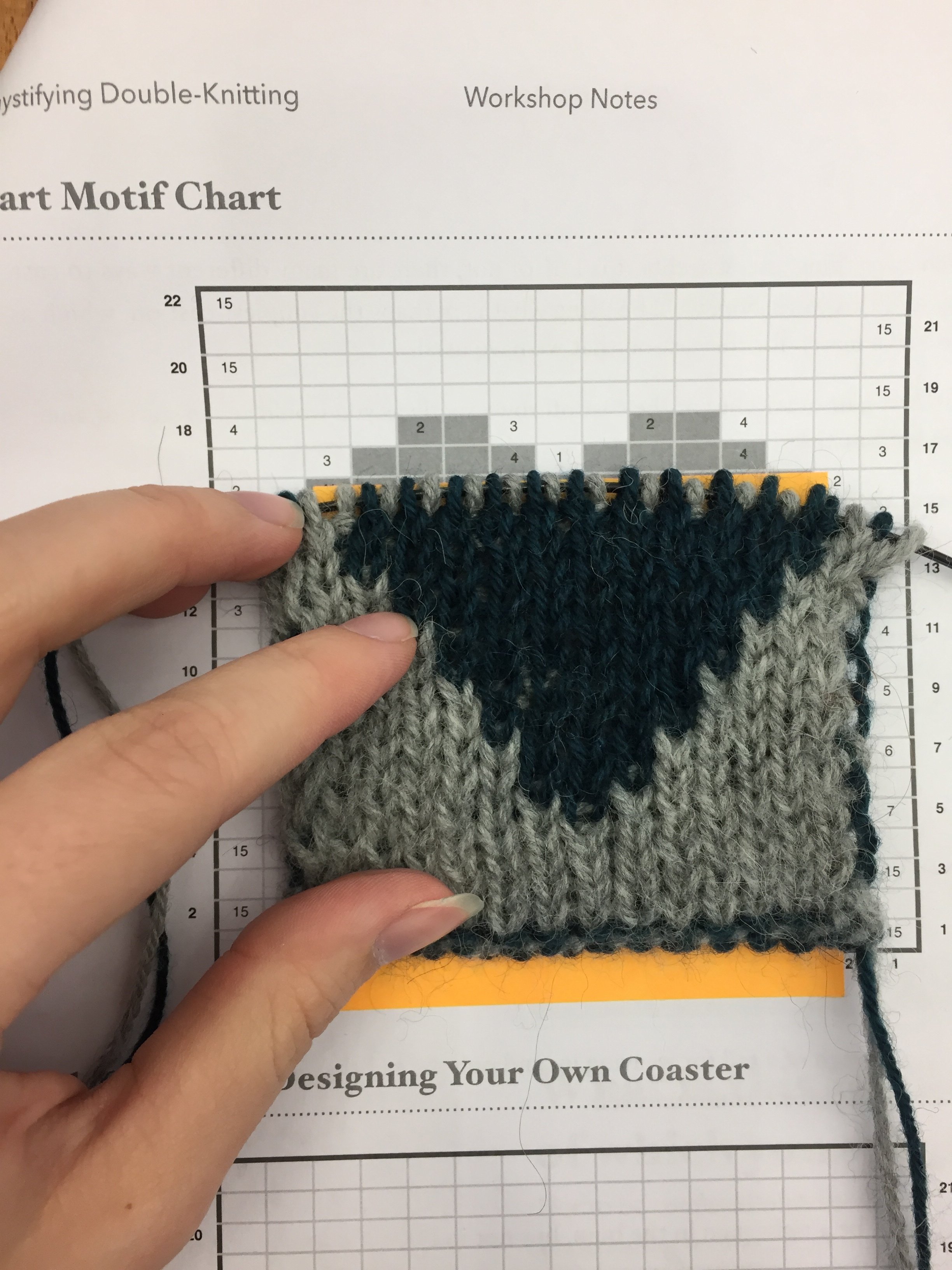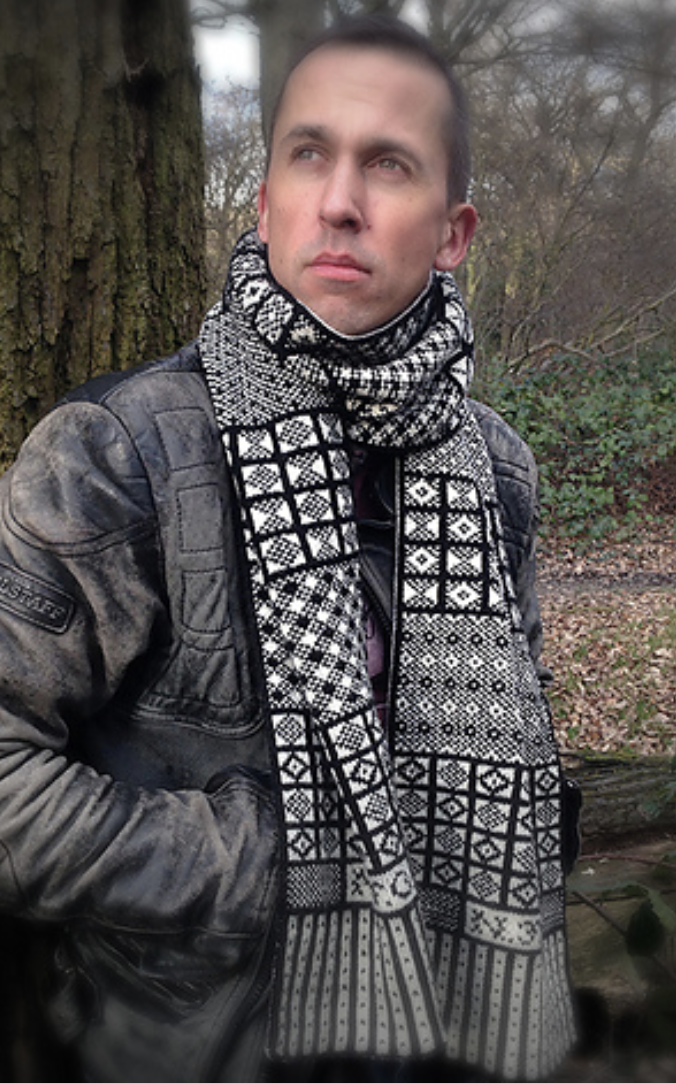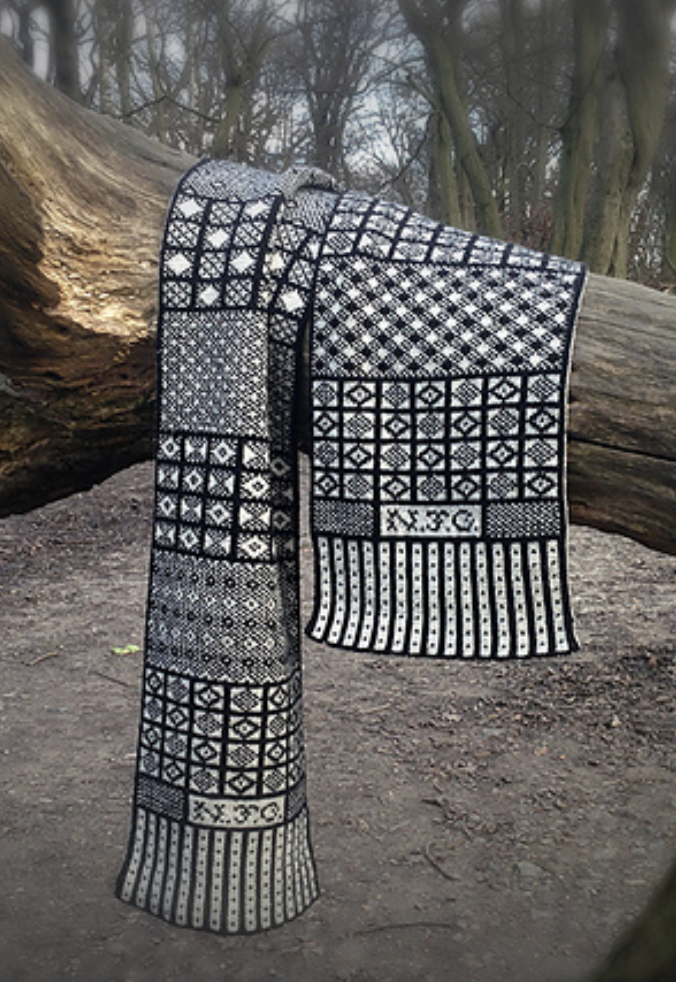Double Knitting with the Sockmatician!
Today I took a workshop with the fabulous, talented, and always entertaining Sockmatician, aka Nathan Taylor at Nottingham Yarn Expo in Nottingham. I have been intrigued by this knitting technique because it creates a reversible fabric creates essentially two different colourways as the colours are reversed in the design on each side. The fabric created from double knitting is very dense from the double thickness, but squishy and with a fair amount of stretch. It also gives designers like myself a lot of freedom in creating charts as you don't have to worry about floats. In stranded knitting you have to worry about how many stitches you have of a given colour to avoid creating long floats. In double knitting, this worry doesn't exist because you have no floats, leaving loads of design freedom! The two sides of the knitting are held together or locked together when you change colours. So if you don't change colours for many stitches you can pull the fabric apart and feel that they are not attached/locked together.
Learning to double knit by knitting a swatch with a heart motif ©Aleks Byrd 2017.
One of Nathan's designs that caught my eye is his Sanquhar Scarf that he showed at the beginning of the workshop.
Nathan Taylor's Sanquhar Scarf
This scarf takes patterns from traditional Sanquhar gloves from Scotland and adapts them to a long scarf and double knitting. The patterns were not altered other than to fit the desired scarf size. Nathan created this knitting pattern to introduce the Sanquhar patterns to a younger knitting audience. He wanted to create something that looks modern and fits a modern young wardrobe that would subsequently keep the pattern tradition alive. I really connected to this sentiment of keeping beautiful, rich patterns alive and relevant (also keeping the tradition of knitting in general alive and fresh). It also continues the pattern of methodologies in the reinterpretation of traditional motifs of creating upon reflection of tradition which is achieved in this case by translating patterns from one technique of knitting to another to update its relevance and skill in the modern culture of knitting.
I'm looking forward to taking this technique and inspiration (from the application/ design of the Sanquhar scarf) into my practice. It will be interesting to similarly take patterns that were traditional stranded knit in the round to a different technique that creates a similar but functional reversible fabric.
Image from Ravelry Pattern page
Taylor, N. Sanquhar Scarf. Available at: https://www.ravelry.com/patterns/library/sanquhar-scarf




